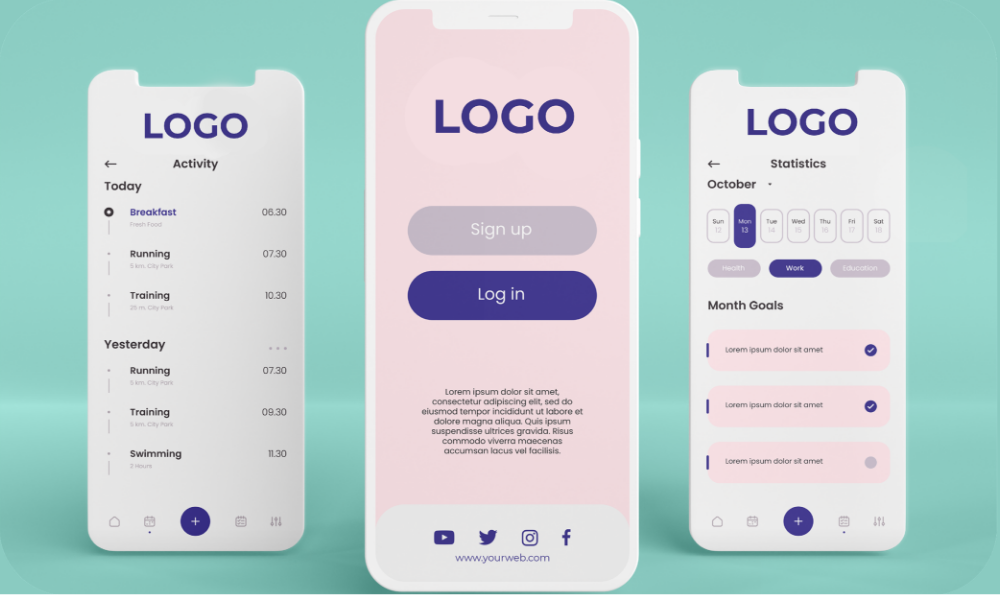
What does a UX designer do?
User experience (UX) design is all about creating functional products that users are able to seamlessly interact with in an engaging way – this is especially true for digital products such as mobile applications or websites.
The demand for UX designers has increased over the last couple of years thanks to the ubiquitous nature of the internet and other innovations in the technology space. With so many people interacting with their mobile devices, online platforms and native applications it has become rather evident that users prefer a seamless experience that is easy to use with very little barriers.
It is the job of UX designers, among others, to ensure that the human-computer interaction process with technology products are usable, enjoyable and accessible.
So what are some of the more detailed tasks carried out by a UX designer? In this blog we are going to look at:
Understanding user requirements
One of the most important aspects of a UX designer’s role is to best understand user requirements or needs. These requirements often serve as an input into the development process of creating a usable product. Since users tend to be a core stakeholder of any given product, it is imperative to understand what their expectations, needs and wants are when formulating a good UX.
For example, when developing an e-commerce mobile application, a UX designer must take into account the various points of interaction throughout the application and make sure that those interaction points are able to facilitate a transaction from start to finish.
This may include paying special attention to the shopping experience, from the moment a user decides to browse a category, filter through products, add items to their cart to checking out and completing a purchase. Without understanding user requirements, it is unlikely that the UX designer will have a solid foundation on which to formulate a good user experience.
Working with the development team
Apart from working with end users, UX designers are also required to work very closely with the development team and other members involved in the project. Usually the development or project team consists of a product owner – the individual responsible for the project’s outcome, business analysts – those who are required to draft and make sense of user requirements, and software developers – those who are required to write code and perform engineering tasks to deliver the final product.
A UX designer’s job description can be quite broad when working in a project team, in that they may have to create mock-ups or prototypes of the intended final product. Being able to collaborate with the project team is thus a crucial workplace skill to have.
Technical skills required
Given that UX design is a specialised role, it is a role that definitely requires technical skills, especially within the actual design process.
These skills may include wireframing, which allow UX designers to build a functional framework of the intended system. Wireframing is particularly useful when developing a minimal viable product of a mobile application or a website. Prototyping is another crucial skill and much like wireframing, a prototype provides stakeholders with a visual representation of the final product. The difference between wireframing and prototyping is that the latter tends to be a lot more functional than the former. This enables UX designers to test the functionality and identify issues early on in the system development life cycle.
Popular software tools that are used by UX designers to successfully develop both wireframes and prototypes include Justinmind, Adobe XD and Figma.
Becoming a UX designer
While UX design is a broad field, it might seem overwhelming and confusing when trying to determine where exactly to start. Fortunately, there are many online courses that one could easily enrol in to get started with even the basics in UX design.
The Google UX Design course is an excellent place to start and it assumes students have zero experience in UX design, which makes it ideal for beginners – the course also offers certification upon completion of the course. When enrolling in online courses, it is worth noting that it might be beneficial to work on personal projects as you engage with the course content.
The rationale behind this is that while you work your way through the course and its technical aspects, being able to apply the concepts and skills you learn on a personal project is a really great way to reinforce everything you’ve learned.
The key is to make sure that the personal project you undertake should be something that interests you and it should solve a problem that you have identified, this way you remain motivated as you continue to upskill yourself.
Building a portfolio
Many UX designers and even software developers will encourage you to build a portfolio of work and projects which you were involved in.
This is an absolute must particularly for new UX designers. You see, it is one thing to obtain a certificate that verifies that you have completed a course, but it is an entirely different thing to prove that you have a good understanding of the fundamentals in UX design. What better way to demonstrate your knowledge and skills other than being able to showcase your work?
When applying for jobs you will find that employers will frequently request a portfolio of evidence to ensure that your knowledge and skills are suitable for the role you are being interviewed for. This is also something that can easily boost your confidence when answering technical questions that may arise throughout the interview.






